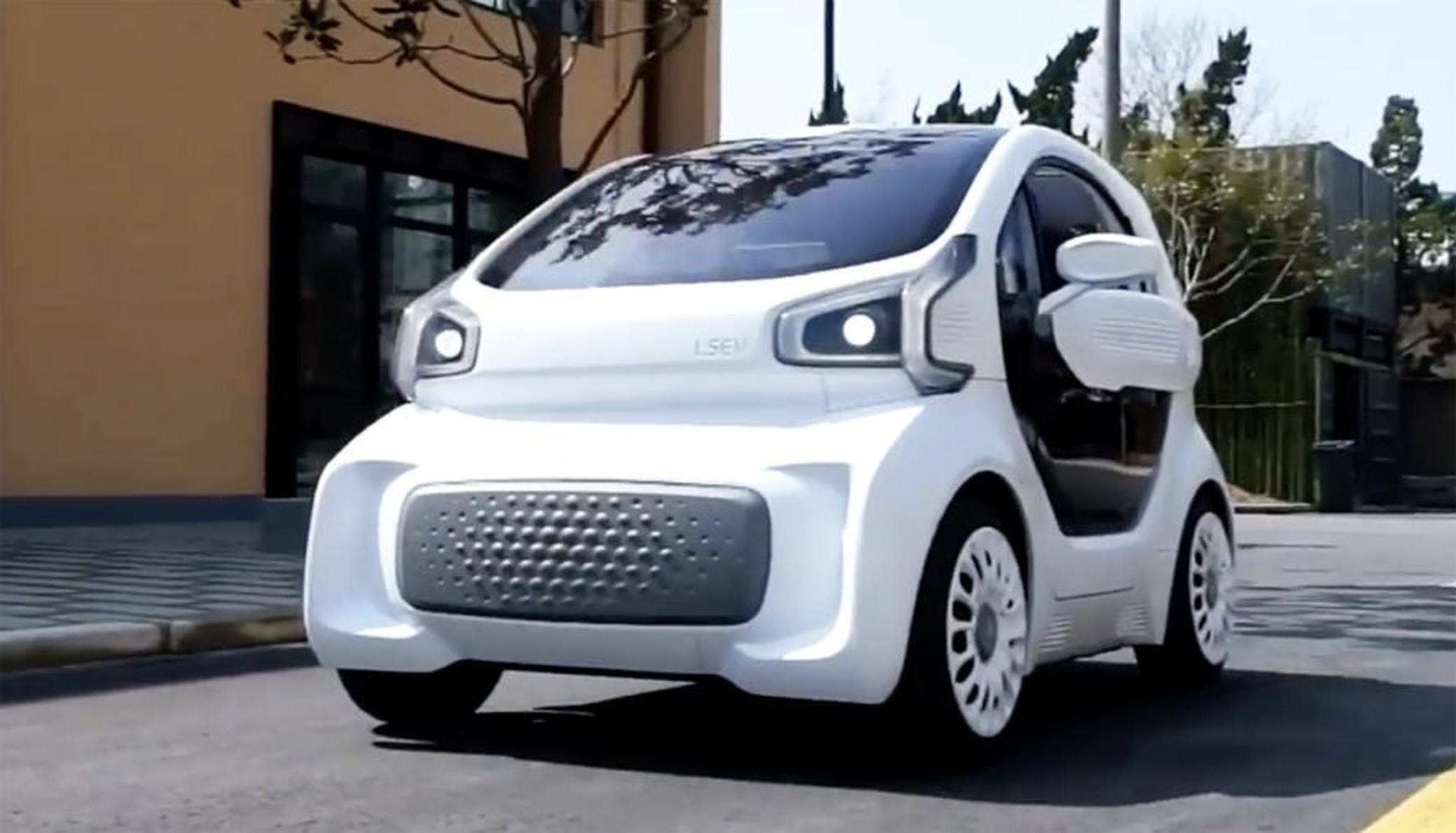The Covid-19 pandemic has affected almost all industries, and the rapidly evolving automobile sector has not been spared. Many of the countries that host the largest manufacturing hubs of the world are yet to lift lockdowns fully. Furthermore, the disruption in global supply chain networks has adversely affected the movement of both assembly parts and finished products.
For the low-speed electric vehicle market, reduced manufacturing and the bottle-necked flow of OEM parts like batteries from China to the rest of the world have caused a significant slump. Less activity in hotels and resorts has also led to reduced vehicle wear and tear for e-golf carts and e-rickshaws.
Fortunately, industry analytics still point to a prosperous future for the players involved. In a time when priorities are being drastically reshuffled, governments are increasingly investing in schemes that accelerate the demand for renewable energy electric vehicles.
So, over the next few years, you can expect the LSEV segment to garner a significant part of the global mobility market share. Read on for a detailed look into the future of Low-speed Electric Vehicles, and how you can prepare yourself to take full advantage.
Unwrapping the Underrated Low-speed Electric Vehicle
When you hear the phrase “electric vehicle”, what comes to your mind? Our bet is that you think of a Tesla roadster. However, an industry as broad as the EV sector has more than one thing going for it. After all, critics have been increasingly challenging Tesla’s disruptiveness as overrated, particularly pointing out that it could have trouble scaling up down the road.
Amid all the electric sports-car hype is the less flashy but adamantly promising segment of low-speed electric vehicles. Companies in this sector are at the bottom of the EV market, almost entirely ignored by the mainstream. Nevertheless, they are thriving in applications where customers do not need all the features of your average automobile.
As a car, an LSEV is laughably deficient. It is small, slow, and virtually incapable of carrying any luggage. At first glance, it will undoubtedly fail to meet your minimal performance criteria. they’re vastly deficient and don’t even meet the minimum performance criteria for most customers.
That said, low-speed electric vehicles have applications to where they are better suited than traditional automobiles. Picture low-speed EVs in golf courses, resorts, and college campuses. LSEVs fit better in these environments because they are cheap to buy and charge, slow, increasing pedestrian safety, and they do not create tailpipe or noise pollution. Range and comfort are not important considerations for short trips. A full-size car would, therefore, be overkill for such applications.
Low-speed electric vehicles may have found their place in organized communities, but as recent trends portray, they are not stopping there. Because of their size, they have found an increasing market of customers looking for convenient, every-day city mobility solutions. They are easier to navigate on narrow streets, and they occupy relatively less parking space. Furthermore, LSEVs are exempted from the numerous congestion taxes that some major cities charge vehicle owners for them to access city centers.
The Champions of Growth
The appeal of low-speed electric vehicles is well backed by market performance. The global market value for LSEVs stood at $2.7 billion in 2017, and despite Covid-19, it is still set to reach $7.6 billion by 2025. These numbers represent a remarkable CAGR of 15.4 percent in seven years.
Several factors are responsible for driving growth in the present and they will continue to do so in the future. The most significant influencers are seemingly increasing government regulations towards vehicle emissions, and skyrocketing fuel costs. Global warming concerns are also motivating the younger market base to adopt environment-friendly mobility options.
Furthermore, technological advancements in electric vehicles will continue to bring about lucrative growth opportunities for the LSEV market globally.
Government push for reduced vehicle emissions
The conventional gas-powered automobile generates the power it needs to move with its internal combustion engine. Ideally, the combustion system incinerates the fuel entirely, leaving only water and carbon dioxide as waste. As the perfect internal combustion engine does not exist, however, the reality is that this combustion process generates a handful of greenhouse gases.
By contrast, an electric vehicle runs on power generated by an electric motor with a continuous supply or current. The elimination of the combustion process means the car does not create any pollutants.
Today, the U.S., China, Germany, and France, have all implemented stringent laws and regulations to curb vehicular emissions. Automobile manufacturers in these countries must use advanced technologies to keep the emissions from their vehicles at a minimum. Makers of low emission vehicles are rewarded with incentives like tax and import duty deductions.
This government pressure has pushed manufacturers to think outside the box. Even traditional car manufacturers are showing interest in the low-speed electric vehicle market. Late last year, Toyota debuted an array of LSEVs, ranging from wheelchair attachments to enclosed motorcycles. The automobile giant envisions these unusual offerings as the enablers of mainstream EV adoption.
Increase in fuel costs
The past decade has seen a significant increase in fuel costs, and this has, in turn, fueled the rise of the low-speed electric vehicle as an inexpensive mode of daily, short-trip commutes.
Interestingly, while gasoline prices have been on the rise, electricity costs have remained consistently low in many countries. The cost of oil is expected to continue rising, as crude oil sources gradually become more limited.
Additionally, low-speed EVs typically have less power demand than larger electric vehicles. They are therefore appealing to young drivers that would rather worry about charging their phones than their car.
Proactive government initiatives
Urban development is anticipated to boost market expansion significantly. With the growing inclination of customers towards electric motors, governments of various countries have been increasingly focusing on developing infrastructure for these vehicles.
In China, the low-speed electric vehicle market has received a joult through initiatives like public charging stations and separate, congestion-free LSEV roads. Meanwhile, Tokyo recently opened two solar parking lots that can recharge more than 100 electric vehicles simultaneously by solar panels.
As the urban world gradually shifts to more convenient, environment-friendly means of transportation, it is likely that governments will be right behind the trend, pushing it forward with better infrastructure.
Improvement in electric vehicles R&D & battery technology
The increasing demand for LSEVs has been prompting vehicle manufacturers to embrace advanced technologies. New electric car models require production techniques that capitalize on automation to improve efficiency and minimize errors.
3D printing technology is proving to be a useful tool in LSEV manufacturing. It is shortening R&D times and enabling manufacturers to develop custom parts at reduced costs. As demand for low-speed electric vehicles continues to grow, 3D printing is expected to play a critical role in shaping the industry’s prosperous future.
Perhaps even more significant than 3D printing is the advancement of EV batteries. Currently, various e-cart and e-bike battery and drive mechanism providers are innovating around their products to offer longer battery life.
Although demand for EV batteries has declined for the first time in 2020 due to the Coronavirus, the world’s top producers, from Silicon Valley labs to the Contemporary Amperex Technology Limited (CATL) in China, are still optimistic that success in the long term is undimmed. The demand for Lithium-ion EV batteries has more than doubled in the past five years and remains on track for a ten-fold expansion by 2030.
The EV battery sector is also predicted to keep lowering costs. The prices of EV batteries have dropped by 87 percent in the last 10 years, pushing the cost efficiency of low-speed electric vehicles further ahead of conventional gas-powered automobiles.
Challenges facing the adoption of Low-speed Electric Cars
Going by the growth champions above, it is clear that the future of the low-speed electric vehicle industry is rosy. That said, the upward climb is not without its rocks. The stinging Covid-19 pandemic aside, challenges like public perception and underwhelming infrastructure are and will continue to hold the sector back over the next several years.
Public perception
Despite the plummeting cost of electric vehicles, parts and batteries, the LSEV industry is yet to achieve mainstream acceptance. Analytics suggests that a good number of potential customers of low-speed electric vehicles still prefer cheaper alternatives like bicycles and mopeds.
Admittedly, LSEVs are not expected to get as affordable as these mechanical alternatives any time soon. Governments are also finding it increasingly challenging to fiscally justify large incentives to attract buyers.
Nevertheless, as costs continue to fall and education around electric cars gradually spreads, LSEVs will soon gain a considerable chunk of the automobile market..
Lack of proper charging infrastructure
According to a report from the International Energy Agency, the number of public charging points for EVs grew by 60% in 2019. Currently, the pace of infrastructural development seems to be outpacing the sale of electric vehicles.
However, these charging stations are not evenly distributed. Their shortage in major cities is a major challenge for the growth of the LSEV market. The possibility that a low-speed electric vehicle might come to a halt mid-commute and with no charging point in sight deters many prospective customers from fully embracing them.
Home charging stations are becoming increasingly popular. However, most urban dwellers live in flats and cannot feasibly rely on this option. The situation is worse in developing countries, where support infrastructure for EVs barely exists.
On the bright side, some countries have made commendable progress around the infrastructure problem. In the UK, a partnership of tech giant Siemens and EV charging solutions provider Ubitricity saw the conversion of all lamp posts on a central London street into solar-powered electric vehicle chargers.
In the future, local authorities and employers could look to residential and workplace charging schemes. With both the government and tech leaders pushing for EV adoption, charging infrastructure is bound to improve radically.
Not 100 percent green
When compared to gas-powered automotives, EVs are the obvious winner of the “go-green” race. However, some critics argue that EVs, even low-speed electric vehicles, are not entirely zero-carbon. They produce non-exhaust emissions and run on electricity, most of which does not come from renewable sources.
Even if all LSEV charging points in the world were solar-powered, other environmental factors still exist. The batteries, for instance, are made using minerals that must be mined. Furthermore, as more people adopt LSEVs, the disposal of deteriorated batteries will leave a significant carbon footprint.
Nevertheless, nobody can deny that EVs reduce the amount of exhaust emissions significantly. They may not be entirely carbon-free, but they are a much greener option than current mobility solutions.
What does the Low-Speed Electric Vehicle Industry need to do to secure its future?
The LSEV industry is making steady progress with better, cheaper technology and more widespread infrastructure. As you have learned, however, it still needs to overcome notable challenges to accelerate growth.
If you are in any way interested in low-speed electric vehicles, you would be interested to know what the sector must do to achieve sustainable scalability in the coming years.
Making Bold choices
Automotive-OEM profitability through electric vehicle technology is currently a top priority for management. Even with the budget strains that the Coronavirus has caused, EV investments are still ramping higher. Yet, for many automobile companies, EV manufacturing divisions have not achieved profitability. Even Tesla, recently named the world’s most valuable car maker, is making losses.
However, if OEMs push the right buttons, they can uncover new ways to make EVs profitable. One of the most promising avenues is the low-speed electric vehicle segment. LSEVs are typically cheaper to make than fully-fledged electric roadsters. Moreover, because they are affordable, they are a lot more appealing to the average EV enthusiast than their larger, costlier counterparts. By diversifying their portfolios, global leaders in the EV space may finally turn the tide and start making money.
Besides new product lines, EV companies will also need to be more willing to join forces with competitors, new players and policy makers on manufacturing, platform development and market readiness. Such partnerships are critical to the advancement of low-speed electric vehicles, particularly now that automakers are struggling to manage costs and grow customer adoption.
Synchronizing the electric-vehicle ecosystem
The LSEV industry is continuously developing strategies to appeal to the mainstream. However, because of the newness of the EV market, these strategies are not always aligned or supported by every participant. The recent shortage of batteries in Europe is a testament to this problem. An integrated approach to battery development and supply by global manufacturers would help to ease the burden..
Similarly, the EV industry would benefit significantly from greater clarity regarding national- and city-level emissions and pollution regulations. By aligning expectations, authorities would give EV players the clarity they need to plan for activities like raw material mining, battery-cell production, and entry-to-market.
As we move towards the electrified mobility future, players must start working towards common goals for the industry to make tangible progress.
Further expanding the model range
Despite the many model launches announced by automakers between 2019 and 2020, the options available still skew heavily toward higher-priced premium EVs. Manufacturers are yet to show tangible commitment to affordable, mass-market EV options.
Accelerating the availability of low-speed electric vehicles is an essential move for industry participants to gain traction in today’s EV market, particularly in emerging markets like Brazil and India. They are also critical for tapping into the rapidly expanding ride-hailing sector.
In markets like China, city-friendly LSEVs are virtually at purchase-price parity with ICE vehicles. Add subsidies and their cheaper maintenance to the mix, and LSEVs turn out to be better options for the urban population.
Low-speed electric vehicles are expected to have slower acceptance in markets like the U.S., where larger vehicles like SUVs and trucks are seemingly the preferred choice for commuters. LSEV OEMs might therefore be forced to diversify into models that can offer a larger form factor and longer range.
Get ready for the Low-Speed Electric Car revolution
The global electric vehicle industry has accomplished tremendous achievement in a remarkably short time, thanks in large part to regulatory pressure, inspiring innovation in parts and batteries, and aggressive investment in EV platforms. Low-speed electric vehicles, in particular, have gone from compact estate bikes and resort golf carts to capable automobiles that can fit in today’s city streets.
Nevertheless, as the LSEV market continues its rapid, unpredictable growth, manufacturers are expected to be at the top of their game. Now more than ever, they must make bold choices to explore new opportunities and make new partnerships with suppliers, governments, and even competitors.
The good news is that customers are increasingly recognising the importance of e-mobility for the planet. Long-term cost trends are also heading downward. Moreover, the industry still has a good number of levels it can pull to achieve mainstream success.
For a sector that makes things happen in several multiple-year product cycles, it is exciting that we are finally knocking on the door to a more sustainable automotive market.



